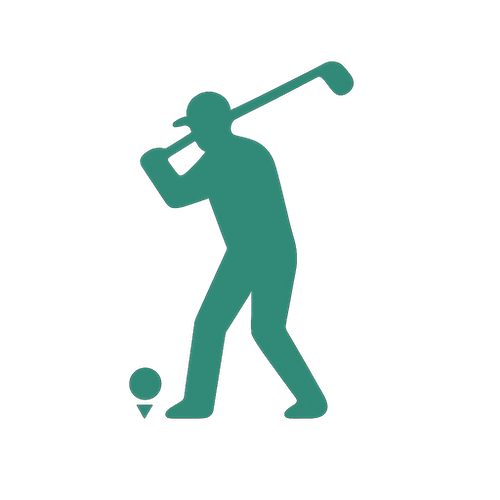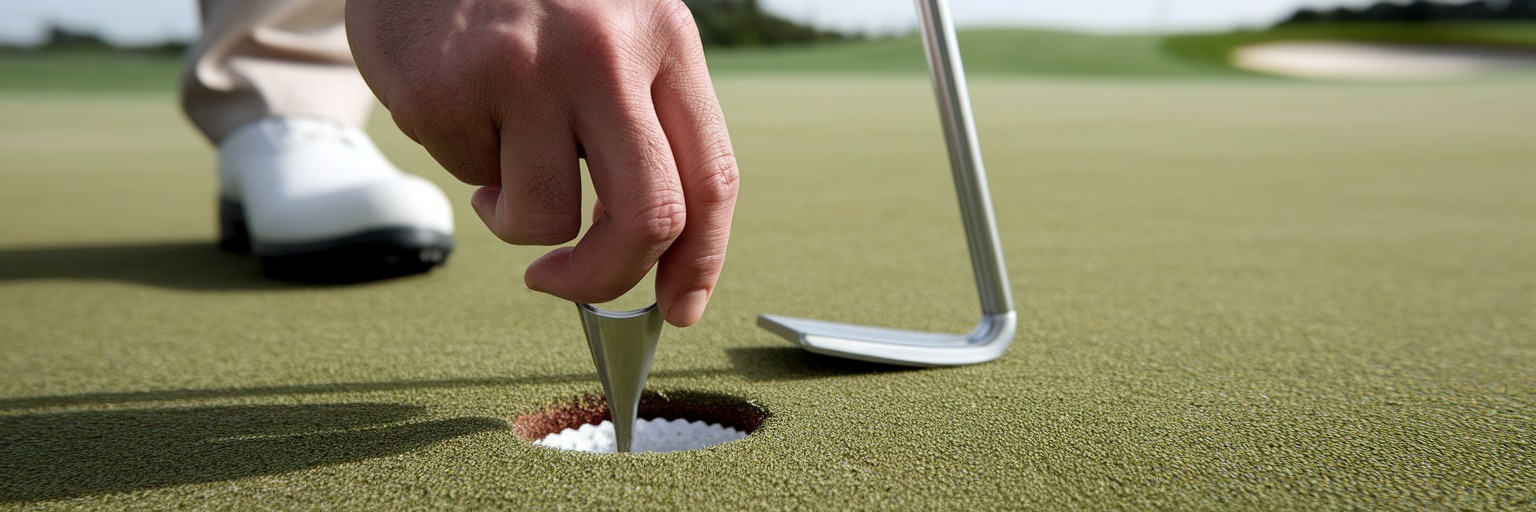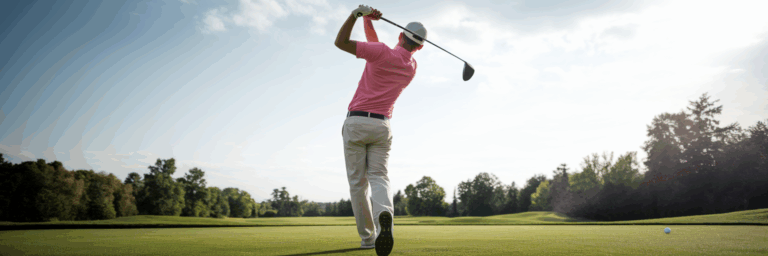How to Navigate Your First Golf Course Experience with Ease
Stepping onto a golf course for the first time can feel like learning a new language. The wide-open spaces, the quiet focus, and the specific routines can seem a little mysterious. But with a bit of preparation, that feeling of uncertainty quickly transforms into confidence and enjoyment. This guide will walk you through everything you need to know, from booking your game to sinking your final putt, ensuring your first round is a fantastic experience.
Preparing for Your First Round
A great day on the course begins long before you arrive. Taking a few simple steps to prepare can remove nearly all the pre-game jitters, letting you focus on the fun. Think of this as your pre-round checklist, full of beginner golf course tips to help you feel ready and relaxed.
Booking Your Tee Time
A "tee time" is simply your reservation to start your round. You can book it online or by calling the course's pro shop. For your first outing, try to book during a weekday afternoon or another off-peak time. The course will be less crowded, which means you can play at a comfortable pace without feeling rushed by groups behind you.
Dressing the Part
Golf has a traditional dress code, but it is more about respect and comfort than formality. Most courses require a collared shirt and prohibit jeans or athletic shorts. This attire is designed to be comfortable for movement and suitable for changing weather. You do not need expensive brands, just clean, appropriate clothing that allows you to swing freely.
Packing Your Golf Bag
You do not need a full set of 14 clubs for your first time playing golf. A starter set or even just a few key clubs will be more than enough. The goal is to keep it simple. Here is a straightforward checklist of what to bring.
| Item Category | Essential Items | Why You Need It |
|---|---|---|
| Clubs | Putter, a few irons (e.g., 7, 9), a wedge, and a driver or hybrid | Covers most situations without the complexity of a full set. |
| Balls & Tees | At least 6-8 golf balls, a handful of tees | Beginners often lose balls, so having extras prevents stress. |
| On-Green Tools | A ball marker (a coin works well) | To mark your ball's position on the green so others can putt. |
| Course Care | A divot repair tool (or use a tee) | To fix marks your ball makes on the green, showing respect for the course. |
| Personal Items | Water bottle, a simple snack (granola bar, banana) | Maintains energy and focus over a 4-hour round. |
Fueling for Success
A round of golf can last four hours or more, so staying hydrated and energized is key. Pack a water bottle and a simple snack like a banana or granola bar. Good hydration and stable energy levels will help you maintain focus and enjoy the entire round.
Arriving at the Golf Course
Knowing what to expect on a golf course when you arrive makes all the difference. Plan to get there about 30 to 45 minutes before your tee time. This gives you plenty of time to get settled without rushing.
Here is a simple step-by-step guide for your arrival:
- Head to the Pro Shop: After parking, your first stop is the pro shop. This is the main hub where you will check in and pay your "green fee," which is the cost to play the course.
- Ask Questions: The staff in the pro shop are there to help. Do not hesitate to tell them it is your first time. Ask where the practice areas, restrooms, and the first tee are located. They can give you all the directions you need.
- Warm Up: Use the extra time to visit the putting green or driving range. Hitting a few practice putts and gentle warm-up shots helps calm your nerves and gets your body ready to play. It is not about hitting perfect shots, but about finding a comfortable rhythm.
- Meet the Starter: About 10 minutes before your tee time, head to the first tee. You will likely meet a "starter," whose job is to make sure groups begin their rounds on schedule. They will let you know when it is your turn to go.
Understanding On-Course Basics
Once you are on the course, the game becomes much simpler than it seems. Each hole is a new opportunity. To start, find the right tee box. These are the designated starting areas for each hole, often marked with different colors.
As a beginner, you should play from the most forward tees, which are usually red or yellow. This is not cutting corners, it is smart play. As experts at The Left Rough point out, playing from the right tees makes the course shorter and your shots into the green less difficult, making your round much more enjoyable. Each hole has a "par," which is the expected number of strokes an expert golfer would take. Do not worry about your score or making par. Your only goal is to learn and have fun.
A few basic golf rules for beginners will help the game flow smoothly. The person with the best score on the previous hole has the "honor" of teeing off first on the next one. After everyone hits their first shot, the player whose ball is farthest from the hole plays next. This continues until everyone has putted their ball into the cup. To help you visualize your path, remember the basic parts of a hole: you start at the tee box, aim for the short grass of the fairway, avoid the longer grass of the rough, and finish on the manicured green.
Essential Golf Etiquette and Pace of Play
Good golf course etiquette for beginners is less about strict rules and more about showing respect for the course and other players. The most important concept is "pace of play," which simply means keeping up with the group in front of you so that no one has to wait. It is not about rushing, but about being efficient.
Here are three easy ways to maintain a good pace:
- Be Ready: When it is your turn, be ready to hit. While others are playing, you can be thinking about your next shot and selecting your club.
- Walk Briskly: Walk at a good pace between your shots. Enjoy the scenery, but keep moving forward.
- Limit Practice Swings: One or two practice swings are plenty. Taking too many can slow down play and tire you out.
If you are having a tough time on a hole and have already taken many shots, it is perfectly acceptable to pick up your ball and move on to the next hole. This is a smart, stress-reducing strategy that experienced players use too. Finally, showing respect for the course itself is a core part of the game. Always try to leave the course in better condition than you found it. This includes:
- Repairing ball marks: Your ball will often leave a small dent when it lands on the green. Use a divot tool or a tee to gently fix it.
- Raking bunkers: If you hit your ball into a sand trap, or bunker, use the nearby rake to smooth out your footprints and shot marks before you leave.
- Replacing divots: If your swing takes a chunk of turf out of the fairway, replace it if possible or use the sand provided on your cart to fill the spot.
Lastly, be mindful of other players. Stay quiet and still when someone is swinging, and be careful not to walk on their "putting line," the imaginary path their ball will take to the hole on the green. And if you ever hit a shot that might endanger someone, always shout "Fore!" as a warning.
Embracing the Experience and Having Fun
The most important part of your first time playing golf is your mindset. Your goal is not perfection, it is participation. You will hit great shots and you will hit not-so-great shots. Celebrate the good ones and laugh off the others. Golf is a journey, and this is just your first step.
Playing with a friend who knows the game can be a huge help. As the youth development organization First Tee suggests, one of the best ways to get comfortable is to be on the course with people who are more experienced. They can offer tips and encouragement along the way. Remember to look around and appreciate the scenery. Golf is a wonderful excuse to spend a few hours walking in a beautiful, park-like setting.
Forget about the score. Focus on the feeling of a well-struck shot, the fun of spending time outdoors, and the satisfaction of learning something new. The most important part of learning how to play golf is to enjoy the process and keep coming back. Welcome to the game.









